Ducklings Stewed in Red Wine and Winter Fruits
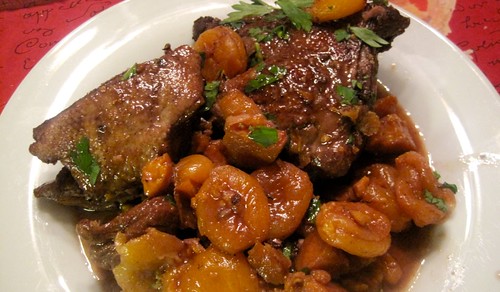
This was my first ever venture cooking duck and I think it turned out fairly well. The recipe itself was superb but I think I could have browned the duck a bit more in the pan so that more of the fat rendered. All in all, it was a tasty dish with a delicate sweetness from the figs, apricots, and creme de cassis, paired with savory goodness from the garlic, duck, and red wine. My personal favorite part was the sweet potatoes. They got so wonderfully soft and soaked up the delicious sauce.
Ducklings Stewed in Red Wine and Winter Fruits
recipe from The New Basics Cookbook
ingredients:
- 4 cups dry red wine
- 1 cup prepared beef stock
- 1 lb dried figs (I used a mixture of Turkish and Black Mission)
- 3 lbs sweet potatoes
- 4 tbsp unsalted butter (whether this is needed or not is debatable as the duck has a TON of its own fat)
- 3 ducklings (4 1/2 lbs each), well-rinsed, patted dry, and cut into 6 pieces each
- coarsely ground black pepper to taste
- 2 cups dried apricots
- 6 large garlic cloves
- 1/4 cup creme de cassis (black currant flavored liqueur)
- 2 tbsp dark brown sugar
- fresh flat-leaf parsley, chopped
- Combine 3 cups of the wine and the stock in a saucepan, and bring just to a boil. Remove the pan from the heat, add the figs, and set aside.
- Peel the potatoes, and cut them into balls with a melon baller; you should have about 4 cups. Place the potato balls in a large saucepan, cover with cold water, and bring to a boil. Lower the heat and simmer for 5 minutes, then drain the potatoes and set them aside.
- Preheat the oven to 350 degrees F.
- Melt the butter in a large deep flameproof casserole or dutch oven. Brown the ducklings, a few pieces at a time, over medium heat. (While the ducks are browning, it may be necessary to pour off some of the fat. There should be no more than 4 tablespoons in the casserole.) As they are browned, transfer the pieces to a plate.
- When all the duck has been browned, pour off any remaining fat from the casserole and return it to the heat. Add the remaining 1 cup wine and bring to a boil over medium heat, scraping up any brown bits in the casserole.
- Return the duckling to the casserole, and sprinkle it with the pepper. Add the figs and their soaking liquid, the potatoes, and the apricots, garlic, creme de cassis, and brown sugar. Stir well, and bring to a boil over high heat.
- Cover the casserole, transfer it to the oven, and bake for 30 minutes. Then stir it thoroughly, and bake another 30 minutes.
- Arrange the duck, fruits, and vegetables on a large serving platter. Skim the grease from the sauce. Pour a bit of the degreased sauce over the duck, and sprinkle it with the parsley. Serve the remaining sauce on the side.
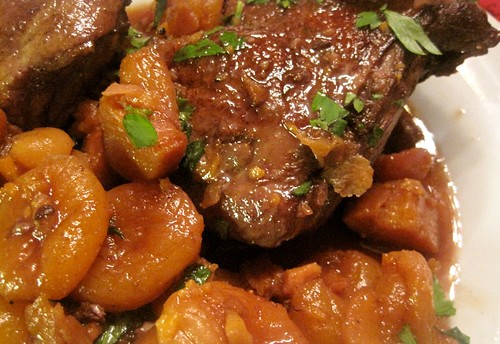


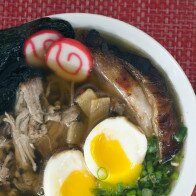


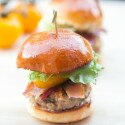
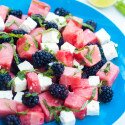
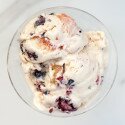


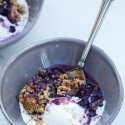
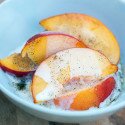


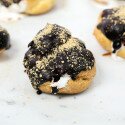
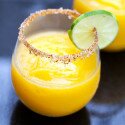

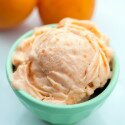
I'm about to prepare this dish (from my copy of New Basics) for my husband's birthday dinner party. Plus it will be the first time I use the big Dutch oven we gave each other for Christmas. Other than browning the duck a bit longer, do you have any other variations to suggest from the recipe? Thanks!
One more question: how did you cut the duck: breast+wing, thigh, and leg?
One suggestion that I would make is to just cube the sweet potatoes. It's much easier and less time consuming. I started out using the melon baller but it just seemed like such a process hah so I stuck to just chopping them into cube roughly the same size as the balls.On the duck-butchering front, yep! Exactly as you said. 1 breast and wing is one sixth, then each thigh is a sixth, and each leg. Just as a warning, the full recipe make A LOT! I had pounds and pounds of leftovers after feeding 5.Let me know how the recipe works out and tell your husband Happy Birthday!
I appreciate your reply. I was thinking of cubing the sweet potatoes rather than using the melon-baller. Thanks for confirming. And thanks for the heads-up about the quantity!
Hi Rachael:We had a very successful dinner party last night. I thought I'd post the modifications I made to the recipe. I was lucky enough to have a professional chef on the premises (my sister-in-law's boyfriend), and he made some suggestions that tremendously improved on the original recipe:1) If possible, debone the breast, leaving the skin on. This makes the presentation so much more elegant. (I had the butcher cut the ducks into pieces, including deboning the breast.)2) Score the skin of the breast in a cross-hatch pattern, cutting through the fat layer but being careful not to pierce the meat. This helps render more fat and keeps the breast lying flat during the browning phase. No need to score the skin on the legs. Note: We did n't use the wings. They went with the carcasses, which is now in my freezer for when I'm ready to make stock. 3) Brown legs and breasts separately. Okay to let the fat come up about 1/2 inch on the side of the legs while browning. Pour off the fat regularly from the breast. The key is the brown slowly, over med-low heat. For three ducks, allow 45 minutes or so.4) Now the dish is in the oven. The other crucial point is to cook the breast about 30 minutes less than the legs. We put everything in the Dutch oven, according to the recipe (but NOT stirring); cooked for 30min; then laid the breasts on top, and cooked for another 15 min (when breasts registered 130F). 5) Other details: We eliminated the apricots–would have been overkill. We cubed the sweet potatoes; they came out mushy. Next time I will blanche for 1min tops, or just put them in the stew raw. Delicious! 4)
Wow that sounds wonderful! Thanks for the great tips- I will remember to score them next time and get the bones taken out. That sounds like it would make it much simpler. I do agree that the apricots were a bit much so I will definitely try it without them next time.
One more thing (important): my pal the chef insisted that I slice the cooked breasts before arranging everything on the platter. I was feeling lazy about adding one more step, but he just took matters into his own hands and did it. He was right–the presentation was so much prettier that way, and people could take smaller portions if they wanted. We put the figs and sweet potatoes on the bottom, then, on top of that, arranged the sliced breasts in an overlapping pattern on one end of the platter, and the legs on the other end. Extra sauce was in a gravy boat to the side. I served with polenta topped with shaved parmesan and sauteed chanterelle mushrooms, and a salad of winter greens tossed with bleu cheese dressing and topped with slivered radicchio. For dessert: almond cake from a recipe in the book Cooking for Mr. Latte, by NYTimes food writer Amanda Hessler, coconut gelato, and port. Thanks again for your blog!